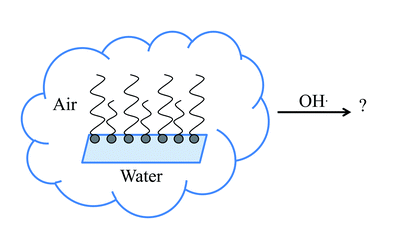
The effect of pollutants on the atmosphere is still not fully understood and, although model systems have been used as a predictor, they are still a long way from knowing what happens in the real world. To bridge that gap, a research team led by Professor Martin King from Royal Holloway, University of London, studied atmospheric pollutant particles taken from real-world environments. Unlike model systems, these samples contained different mixtures of molecules, depending on where they came from.
All cloud droplets start as a particle in the atmosphere. Pollution leads to these atmospheric particles being covered in a thin film, with the thickness and lifetime of these films determining how much of an effect they have on cloud formation and the climate.
The group used neutron reflectometry to look at samples from Antarctica, a remote Atlantic Island near Canda, and UK rural and urban areas. During this process, neutrons are reflected from the thin films, enabling the team to measure the thickness of the films on the particles, and how fast they react with other molecules that would be present in the atmosphere. The thickness is critical to understand how they may cool the planet and the speed at which this cooling may occur.
They used the hydroxyl radical OH (one of the most reactive molecules found in the atmosphere) and followed its reaction with the natural thin films as a function of time. Once they had measured both the film thickness and the way the film reacts with the OH radical, they could input these data into a multi-layer model.
Using this model, they were able to show that the atmospheric particles remain in the atmosphere for long enough that they need inclusion in meteorological models. Their work highlights key differences between the way pollutants behave and break down in 'real' atmospheric conditions compared to the way they behave in the laboratory.
Alongside the STFC Central Laser Facility and the other partners of this ongoing project, funded through a grant from UKRI’s Natural Environment Research Council (NERC), Martin and his collaborators from the University of Birmingham, University of Uppsala, and British Antarctic Survey continue to investigate the impact of atmospheric pollutants on our health and the climate.
